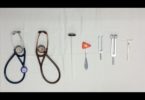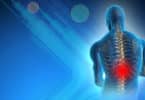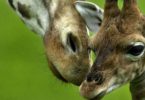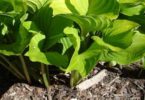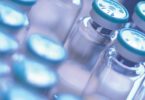Ques. As evident from fossil records which era had no life
(a) Azoic
(b) Proterozoic
(c) Palaezoic
(d) Coenozoic
Ans. (a)
Ques. Amphibian sperm head is
(a) Spherical
(b) Screw shaped
(c) Lance shaped
(d) Spiral
Ans. (c)
Ques. Haploid plants can be obtained by culturing
(a) Young leaves
(b) Endosperm
(c) Pollen grains
(d) Root tips
Ans. (c)
Ques. Pteridophytes are also known as
(a) Phanerogams
(b) Cryptogams
(c) Vasucular cryptogams
(d) All of the above
Ans. (c)
Ques. Nitrogen fixation by Rhizobium is increased in the presence of
(a) Nitrogen
(b) Phosphorus
(c) Potassium
(d) All of these
Ans. (b)
Ques. Which of the following is an example of turgor movement?
(a) Chemotactic
(b) Thermotropic
(c) Seismonasty
(d) Haptotropic
Ans. (c)
Ques. If the number of chromosomes of pollen grains of Pinus is 12, the number of chromosomes in its endosperm cells will be
(a) 36
(b) 24
(c) 12
(d) 6
Ans. (c)
Ques. Which of the following is petroleum plant?
(a) Euphorbia
(b) Potato
(c) Sugarcane
(d) Maize
Ans. (a)
Related: metals and nonmetals questions answers
Ques. Turpentine oil is obtained from
(a) Angiospermic wood
(b) Angiospermous flowers
(c) Gymnospermous wood
(d) Gymnospermous seeds
Ans. (c)
Ques. The outermost wall of a plant cell is
(a) Tertiary wall
(b) Middle Lamella
(c) Primary wall
(d) Secondary wall
Ans. (b)
Ques. Transformation of light into nerve impulse is
(a) Mechanical process
(b) Biological process
(c) Physical process
(d) Chemical process
Ans. (b)
Ques. Sexual reproduction in E.coli is known as
(a) Transformation
(b) Transduction
(c) Sexduction
(d) None of these
Ans. (d)
Ques. Under secretion of adrenal cortex causes
(a) Sterility
(b) Addison’s disease
(c) Cretinism
(d) Dwarfism
Ans. (b)
Ques. Which of the following is a fat soluble vtamin?
(a) Vitamin B2
(b) Vitamin D
(c) Vitamin H
(d) Vitamin C
Ans. (b)
Ques. In rice fields, yield is high due to
(a) Azotobacter
(b) Rhizobium
(c) Clostridium
(d) Anabaena
Ans. (d)
Ques. The best solution to population problem in India is to
(a) Conserve natural resources
(b) Increase medical facilities
(c) Reduce the birth rate
(d) Increase food production
Ans. (c)
Ques. Middle lamella is made of
(a) Calcium oxalate
(b) Calcium pectate
(c) Calcium carbonate
(d) Sodium carbonate
Ans. (b)
Related: cell cycle quiz multiple choice
Ques. Addiction of LSD will eventually lead to
(a) Hallucination
(b) Damage of lungs
(c) Mental and emotional disturbances
(d) Damage to kidneys
Ans. (a)
Ques. Warfarin acts as an antagonist to
(a) Haparin
(b) Citrate phosphate dextrose
(c) Vitamin K
(d) All the above
Ans. (c)
Ques. Mycoplasma differ from L-forms in
(a) Size of genophore
(b) Stability
(c) Ability of divide
(d) All the above
Ans. (d)
Ques.Linkage was first discovered by
(a) Mendelon Pisum sativum
(b) Morgan on Drosophila
(c) Beadle on Neurospora
(d) Bateson on Lathyrus odoratus
Ans. (d)
Ques. Estuarian fish culture is a culture of fish in
(a) Marine water
(b) Fresh water of river
(c) Fresh l water of pond
(d) Aquatic medium where fresh and marine water get mixed together
Ans. (d)
Ques. International code of “Biological nomenclature” is applicable to
(a) Plants
(b) Animals
(c) Both animals and plants
(d) None of the above
Ans. (c)
Ques. F1-generation of a dihybrid cross shows
(a) 0% Parental genotypes
(b) 25% Parental genotypes
(c) 50% Parental genotypes
(d) 100% Parental genotypes
Ans. (a)
Related: digestive system multiple choice questions with answers
Ques. Pearl producing Indian species is
(a) Pinctada indica
(b) Ostrea indica
(c) Pinctada vulgaris
(d) Ostrea vulgaris
Ans. (c)
Ques. Linnaeus had the credit for
(a) Discovery of blood circulation
(b) Theory of biogenesis
(c) Discovery of microscope
(d) Binomial nomenclature
Ans. (d)
Ques. Which hormone inhibit gastric secretion?
(a) Enterogastrone
(b) Gastrin
(c) Cholecystokinin
(d) Secretin
Ans. (a)
Ques. Cephalopoda is class of animals in which
(a) Notochord extends upto head
(b) Foot is located on head
(c) Head is located on foot
(d) Head is fused with thorax
Ans. (b)
Ques. Which of the following is cholinesterase inhibitor
(a) Endosulphan
(b) Aldrin
(c) BHC
(d) Malathion
Ans. (d)
Ques. What is the mode of nutrition in Rhizopus
(a) Autorophic
(b) Parasitic
(c) Symbiotic
(d) Saprophytic
Ans. (d)
Ques. Continuous variations are attributed to meiosis through
(a) Mutation
(b) Chromosomal aberrations
(c) Crossing over
(d) Polyploidy
Ans. (c)
Related: chemistry nomenclature test
Ques. ‘World Environment Day’ is
(a) 5th June
(b) 6th June
(c) 10th August
(d) 2nd October
Ans. (a)
Ques. Rennet enzyme was purified by
(a) A. Fleming
(b) S.A. Waksman
(c) Payen ad Persoz
(d) Christain Hansen
Ans. (d)
Ques. Maximum growth in roots occurs
(a) At its tip
(b) In presence of light
(c) Behind the apex
(d) Towards darkness
Ans. (c)
Ques. How many pairs of false ribs are present in man?
(a) 2 Pairs
(b) 3 Pairs
(c) 4 Pairs
(d) 6 Pairs
Ans. (b)
Ques. In Salvia the pollination takes place by
(a) Animals
(b) Insects
(c) Air
(d) Water
Ans. (b)
Ques. The sape of Serratus anterior muscle is
(a) Triangular
(b) Saw-toothed
(c) Slender
(d) Comb-like
Ans. (b)
Ques. Which is the following substances causes addiction of tobacco
(a) Tar
(b) Polynuclear aromatic hydrocarbon
(c) Nicotin
(d) CO
Ans. (c)
Ques. L.S.D. is obtained from
(a) Cannabis sativa
(b) Cannabis Indica
(c) Claviceps purpuria
(d) None of these
Ans. (c)
Ques. Nitrogen fixation is brought about by
(a) Green algae/Eukaryotes
(b) Bacteria/Prokaryotes
(c) TMV
(d) Fungi
Ans. (b)
Ques. Which of the following is the aquatic species of Riccia
(a) Riccia discolor
(b) Riccia himalayensis
(c) Riccia crystalline
(d) Riccia fluitans
Ans. (d)
Related: photosynthesis multiple choice questions
Ques. Which is mental disorder?
(a) Tetanus
(b) Neurosis
(c) Drug dependence
(d) Alcoholism
Ans. (b)
Ques. Cannabis sativa (Hemp) yields
(a) Bhang
(b) Charas
(c) Ganja
(d) All the above
Ans. (d)
Ques. Which of the following is a micronutrient?
(a) Calcium
(b) Phosphorus
(c) Copper
(d) Magnesium
Ans. (c)
Ques. Torulopsis utilis is
(a) A food yeast
(b) Employed for synthesis of citric acid
(c) An important intestinal commensal
(d) Microorganism that yields third generation vaccines
Ans. (a)
Ques. Largest erythrocytes are found in
(a) Man and monkey
(b) Fish and frog
(c) Amphiuma and proteus
(d) Lizard and snake
Ans. (c)
Ques. Absorption of water by root is increased when
(a) Transpiration is increased
(b) Photosynthesis is increased
(c) Respiration is increased
(d) Root pressure is increased
Ans. (a)
Ques. Loop of Henle is present in the nephron of
(a) Frog and Pigeon
(b) Pigeon and Man
(c) Lizard and Man
(d) Fish and Rabbit
Ans. (b)
Related: quiz on central Nervous system
Ques. Wall of vasa deferens
(a) Ciliated and glandular
(b) Ciliated and non glandular
(c) Non ciliated and glandular
(d) Non ciliated and non glandular
Ans. (d)


